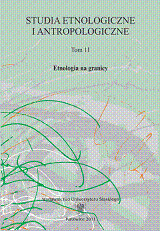Tworzenie się kultury kulinarnej Europejczyków
Formation of the culinary culture of the Europeans
Author(s): Rastislava StoličnáSubject(s): Anthropology
Published by: Wydawnictwo Uniwersytetu Śląskiego
Summary/Abstract: Food and habits connected with it provide a lot of information on the subject of culture. The cultural memory of people, connected with a mythological and religious understanding of the world giving certain dishes, food, drinks a symbolic meaning and some that of taboo, was encoded in eating. The ancient culture of Greeks and Romans was based on farming. Harvest, grapes and olives — three produces of food and cultural role, and the identification symbol of this civilization were the most important. On such basis grew the Mediterranean culinary system which possessed visible vegetarian features, completed with meat and cheese. Nutritionally, the values accepted by “barbarians”, population inhabiting northern and southern Europe at this time, were much different. Different Celtic and German tribes upheld wild nature, fishing animals and collecting widely growing plants. Their main culinary value was not bread but meat. A significant difference between a culinary culture of particular areas of Europe, initiated in ancient times, has existed in the cultural memory till now and belongs to the factors of their identification and separateness. Christianity which was born and grew as the evidence and heritage of Hebrew culture, within the Mediterranean civilization, relegated the role of the products forming a material and ideological basis for this culture to the role of culinary symbols of the cult. By a gradual mixing of “barbarian” rituals with Christian ideology the European culinary culture was cristallised, including mainly the role of meat and fat. In a Christian cultural circle meat had connotations it has nowadays. A common food eating in a symbolic and real way expresses peace and friendship, as well as complementariness between co-feasters. During feasts and ceremonial dinners meat is offered being the symbol of prosperity and culinary pleasure for Europeans.
Journal: Studia Etnologiczne i Antropologiczne
- Issue Year: 2011
- Issue No: 11
- Page Range: 209-219
- Page Count: 11
- Language: Polish

